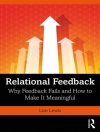1. 1 Introduction In economics, one often observes time series that exhibit different patterns of qualitative behavior, both regular and irregular, symmetric and asymmetric. There exist two different perspectives to explain this kind of behavior within the framework of a dynamical model. The traditional belief is that the time evolution of the series can be explained by a linear dynamic model that is exogenously disturbed by a stochastic process. In that case, the observed irregular behavior is explained by the influence of external random shocks which do not necessarily have an economic reason. A more recent theory has evolved in economics that attributes the patterns of change in economic time series to an underlying nonlinear structure, which means that fluctua- tions can as well be caused endogenously by the influence of market forces, preference relations, or technological progress. One of the main reasons why nonlinear dynamic models are so interesting to economists is that they are able to produce a great variety of possible dynamic outcomes – from regular predictable behavior to the most complex irregular behavior – rich enough to meet the economists’ objectives of modeling. The traditional linear models can only capture a limited number of possi- ble dynamic phenomena, which are basically convergence to an equilibrium point, steady oscillations, and unbounded divergence. In any case, for a lin- ear system one can write down exactly the solutions to a set of differential or difference equations and classify them.
Barbel Finkenstadt
Nonlinear Dynamics in Economics [PDF ebook]
A Theoretical and Statistical Approach to Agricultural Markets
Nonlinear Dynamics in Economics [PDF ebook]
A Theoretical and Statistical Approach to Agricultural Markets
Beli ebook ini dan dapatkan 1 lagi GRATIS!
Bahasa Inggris ● Format PDF ● ISBN 9783642468216 ● Penerbit Springer Berlin Heidelberg ● Diterbitkan 2012 ● Diunduh 3 kali ● Mata uang EUR ● ID 6324492 ● Perlindungan salinan Adobe DRM
Membutuhkan pembaca ebook yang mampu DRM












